What is pilates?
Pilates is a method of physical exercise initially developed during the First World War (1914 – 1918) to gain muscle strength, but which today is used for various purposes, such as balance gain, flexibility improvement and rehabilitation.
It was created with inspiration from the principles of oriental culture. Yoga, meditation, martial arts and traditional Chinese medicine were great influencers.
The Pilates method seeks the most efficient and conscious use possible of the muscles during movements and does not necessarily need equipment.
Through certain fundamentals, Pilates creates a line of efficient, non-impact exercises that seek to improve the practitioner’s health and physical strength. Because of that, anyone can practice. Seniors, children, adults, pregnant women… everyone!
As the practice is performed, the exercises increase in difficulty, following the practitioner’s development.
In this article you will find the following information:
- Pilates fundamentals
- Types
- Benefits: what is pilates for?
- Pilates for seniors
- Pilates for pregnant women
- Pilates for kids
- Does Pilates lose weight?
- Pilates defines the body?
- Physiotherapy
- Exercises
- Price
- Pilates and other practices
- Pilates history
- Common questions
Pilates fundamentals
Pilates uses six fundamentals in its exercises. It is around them that practice revolves. Due to its goal of precise muscle control, the technique used by the Pilates method is called controlgia.
Controlling
The six foundations of Pilates are the foundations of control. Through the technique, it is possible to achieve maximum control of muscle movements in the human body. It is divided into: Breathing, Centralization, Concentration, Precision, Control and Fluidity. Neither is more important than the other and they connect during practice. These principles are as follows:
Breathing is one of the main and most basic principles of Pilates. The method preaches that breathing should always be deep during exercises, seeking to oxygenate the muscle groups well. Likewise, the exhalation must be as complete as possible.
Thus, according to Pilates principles, the “unclean air” is completely removed from the lungs to make way for “clean air”.
It is also through breathing that control is achieved.
According to the Pilates method, every movement must be initiated in the mind. Practitioners must pay attention to every movement and effort made, following the instructions carefully. Move details cannot be lost.
Because of concentration, a Pilates practitioner can learn to perform movements more efficiently, without making unnecessary efforts.
Centering concerns the central region of the body. Called the core or powerhouse, the central region involves the following muscle groups:
- Diaphragm;
- Column extenders;
- Deep column erectors;
- Abdominal muscles;
- Hip flexors;
- Pelvic floor muscles (kegel).
These are the muscles that support the spine and internal organs, and they play a strong role in balancing our bodies as our center of gravity is in them.
Pilates principles say that it is important to strengthen the powerhouse, as through this, the body can have a better posture, which prevents injuries and facilitates balance, making less effort needed for it.
In addition to muscle strength in the region, Pilates seeks mobility in the center of the body, allowing greater control of it and its muscles.
One of the main principles of Pilates, control depends on breathing, centering and concentration. By mastering these three essential principles, control is achieved.
Control is necessary for the proper execution of the exercises. The practitioner should be attentive and focused on their muscle movements and breathing.
This control seeks to relieve the body’s effort, making Pilates energy expenditure more efficient. Only the muscles that are needed are used for each movement.
The movements performed in Pilates must be precise. This is achieved thanks to two factors: control and instructor.
Control, and with it breathing, concentration and centering, allow the movements to be carried out properly. Practice of each of the movements is necessary, and control is especially useful in this learning process.
However, it is necessary to learn the movement correctly. The instructor will teach these moves. He must demonstrate to the practitioner the step by step of each Pilates exercise, correcting the student’s mistakes.
It is important that each movement is performed with precision, preventing unnecessary movements from being used in the exercises.
Fluidity is the sixth principle of Pilates. Every movement must be fluid. The sequences of movements should connect one exercise to another so that the practitioner can move on to the next with as little effort as possible.
The exercises should be smooth and interlocking, in sequence like a dance.
Types

There are two types of pilates. Are they:
Pilates solo
Pilates solo consists of doing the exercises using only your body weight, on the floor. It is the most practical to perform as it can be done anywhere, without the need for expensive devices.
In addition, solo Pilates classes can be taken in groups, which reduces the price as a single instructor can coordinate several practitioners.
Pilates on appliances
When the exercise is performed on devices such as pilates balls, spring chairs, rubber bands and others. The pilates device has the facility for the device itself to help guide the correct movement, as long as the student learns how to use it. The instructor usually also offers a personalized exercise.
Which one to start with?
There is a question of what kind of pilates to start with. This varies from person to person. Any of the types is accessible to everyone and the difficulty gradually increases with them.
Pilates solo has the advantage of being practical and having a lower price, however it is recommended that, if possible, you start practicing on devices. They make it easy to exercise and learn, and having an instructor working directly with you can make corrections to exercises easier.
The pilates instructor should talk to the student so that this choice can be made. If the future practitioner wants to start with the solo, it’s not a problem, but only the instructor can tell which type of pilates is ideal for each one.
Other variations
There are some variations in the types of pilates. These variations were not created with pilates, but added and adapted to practice and can bring benefits.
Pilates aerial or suspended
Aerial pilates, as the name implies, is performed “in the air”. Sometimes called hanging, it is performed with the help of fabrics or straps attached to equipment or the ceiling. The fabric keeps the practitioner in the air and can make the exercises more advanced or not, depending on how it is used.
It is important to carry out the aerial with the help of an instructor, as a fall can be dangerous, especially if any limb becomes entangled and trapped in the tissue, which can cause fractures and dislocation.
Learning to use these devices safely is especially important.
With ball
The Swiss ball, also known as a pilates ball, is made of elastic material and can be used for pilates exercises. It is possible to perform sit-ups, crunches, squats and other movements with the ball, adding variety to the practice.
Benefits: what is pilates for?
The Pilates method is a set of physical exercises and stretching that has several benefits. Between them:
Increased muscle strength
As with any physical exercise, with time and discipline of practice, the muscles get stronger due to the effort. This applies, in the case of Pilates, especially to the abdominal and core muscles of the body.
Flexibility growth
The frequent practice of Pilates increases flexibility, as your exercises also include stretching.
Improved blood circulation
Physical exercise improves blood circulation and conditioning of the heart.
Stress and fatigue reduction
The practice of physical exercise and Pilates helps to reduce stress and tiredness accumulated during the day. It is a practice related to health, but also fun.
Improved fitness
Physical exercises like Pilates, when practiced frequently and regularly, improve fitness, increasing endurance and strength.
Posture improvement
The stretches and positions provided by the Pilates method help the body to maintain a natural and proper posture, improving it as a whole.
Improved breathing
Learning to breathe correctly is essential for any exercise. Breathing is one of the six Pilates principles and is considerably improved with continued practice of the method.
Concentration growth
As one of the principles of Pilates, concentration needs to be practiced by the student of the method. With this practice, your ability to concentrate will improve over time.
Improved motor coordination
Pilates principles help with motor coordination. Learning how to properly move each muscle, with precision and control, is essential to practice.
Socialization
Especially in the case of solo pilates, practice groups are usually formed. While focusing on exercise is extremely important to Pilates, breaks in between can be great times to socialize.
Pilates for seniors
Exercise is important at any age, but older people may find it difficult to do it. Bones and muscles lose strength and high-impact exercise can be problematic for joints.
Pilates has the advantage of not being a high-impact exercise. Effort is reduced, repetitions are low, but the exercise is still there and makes a difference in health.
The benefits of Pilates can be enjoyed by seniors, improving balance, breathing, circulation and muscle strength.
Pilates for pregnant women
Pregnant women can enjoy the benefits of Pilates. Exercise is important for pregnant women, and the Pilates method can have several useful benefits for a woman who is expecting a baby. For example, increased strength in the pelvic floor, the muscle that supports the organs and, in this case, the baby as well.
Strengthening the pelvic floor can help with childbirth. In addition, Pilates is an exercise with little effort and impact, which is suitable for pregnant women. It is important to remember that the instructor must be prepared to attend to pregnant women.
Check out the main benefits of practicing Pilates for pregnant women:
Stretching and exercise reduce back pain by strengthening the region of the body that supports the spine, which during pregnancy can suffer from the extra weight of the baby.
Increased support for the spine also improves the posture of the pregnant woman, as well as anyone else’s. But the pregnant woman may need to watch her own posture due to the child’s weight and, therefore, Pilates can help.
Breathing is essential during childbirth for relieving the pain of contractions and for oxygenating the baby. Pilates improves breathing and will help at these times.
The pelvic floor supports the body’s organs, including the uterus with the baby during pregnancy. Keeping this muscle strong and exercised helps you have a healthier pregnancy and an easier birth. It also helps to control urinary incontinence.
Physical exercises, in general, improve the sleep quality of the practitioner. Pilates, with breathing techniques and physical exercise, can improve sleep, whether pregnant or not.
There are groups of pregnant women to practice Pilates. Socialization is one of the great benefits of pilates.
Pilates for kids
The practice of Pilates, adapted for children, can be a good exercise for them, ensuring proper posture and muscle strengthening for life, as well as flexibility.
Among the benefits of Pilates for children are:
- Improved posture;
- Improved flexibility;
- Improved concentration;
- Muscle strengthening;
- Greater body awareness;
- Development of exercise habit;
- Discipline development.
Does Pilates lose weight?
Like any exercise, Pilates has the potential for weight loss and will, yes, make you burn more calories. However, it is important to remember that the method was not created for this purpose and some adaptations may be necessary for this.
The Pilates method was created to improve physical condition and health. Your movements and exercises are aimed at efficiency, aiming to expend little energy. Little energy expenditure equals little weight loss.
There are variations of the method that focus on weight loss, with the use of weights, more extensive and intense exercises, as well as combinations with aerobic activities. However they were not developed in the same way as pilates.
It is important to find out about them before going after them, and if your goal is to lose weight, aerobic exercise may be more indicated.
Pilates defines the body?
As with weight loss, pilates is not designed to define the body. Normally, what prevents a person from having a six pack abs is not the small muscle, but the layer of fat that covers it.
Pilates increases abdominal muscle mass, but what eliminates fat is aerobic exercise. Therefore, if you have a lot of fat, muscle gain will not be enough for body definition.
The practice, however, can be used in conjunction with aerobic activities to increase muscle definition.
Physiotherapy
Pilates is recommended for physical therapy rehabilitation. Several studies indicate that the benefits are numerous and the contraindications few. Athletes, the elderly, pregnant women and people with orthopedic problems (such as scoliosis) can practice.
In order for it to be enjoyed therapeutically, studies indicate that sessions should be spaced out for at least one hour, and that all the basics of pilates should be applied.
However, it is important to consult with a physical therapist before going into Pilates practice for health conditions. Only he knows which is the best indication for his specific case.
Exercises
The original pilates exercises are already diverse, totaling 34. In addition to them, there are still exercises with apparatus! So there are too many different exercises for us to list them all here.
Therefore, we will separate some of each device and modality, starting with the devices. Remember to look for Pilates instructors to learn the correct way to perform each of these and other exercises.
Ladder Barrel
Ladder barrel translates to “ladder barrel” (those vertical ladders). The equipment has two parts, one that is the vertical ladder and one that is a rounded structure, like a lying barrel, with a padding. It is around 90 to 98 cm tall.
Some of the exercises are:

Designed to stretch the hamstring muscles (those at the back of the thigh), this exercise consists of leaning your back on the ladder and stretching your leg over the barrel, then flexing your torso over it and finally returning to the starting position. .
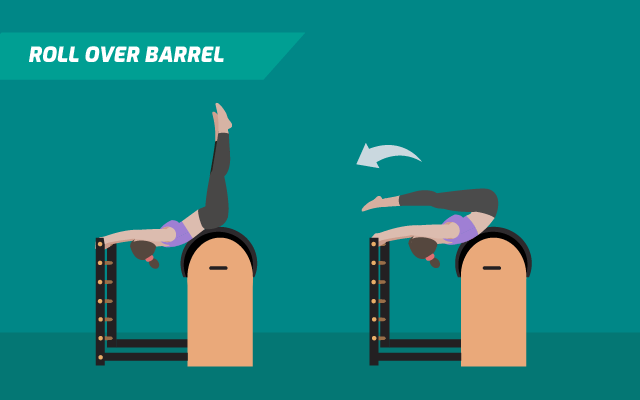
Designed to mobilize the spine and strengthen abdominal muscles, this exercise consists of lying on the barrel with your belly up, with your hands on the top step of the ladder, with your legs straight up, then flexing your hips so that the legs are parallel to the body.
Step chair
Translated as “step chair”, the step chair consists of a small padded bench with one or two inner pedals, attached to the chair by springs at one end. The device is small, easy to move, and is used for stretching and increasing strength.
Among the possible exercises are:
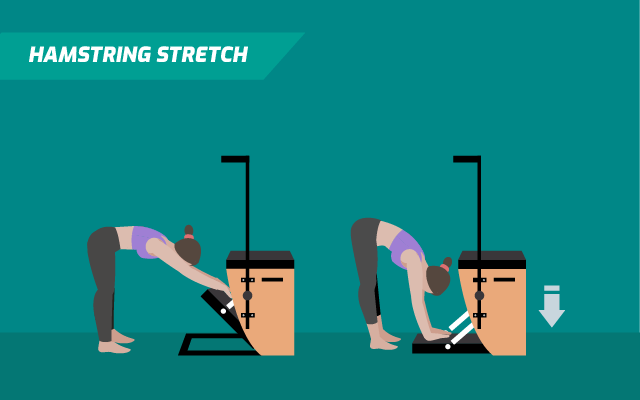
To perform this exercise, you should face the chair with your feet together and, with your legs straight, push the pedals towards the floor. This exercise uses the counter force applied by the springs to strengthen the muscles and stretch the back leg muscles.
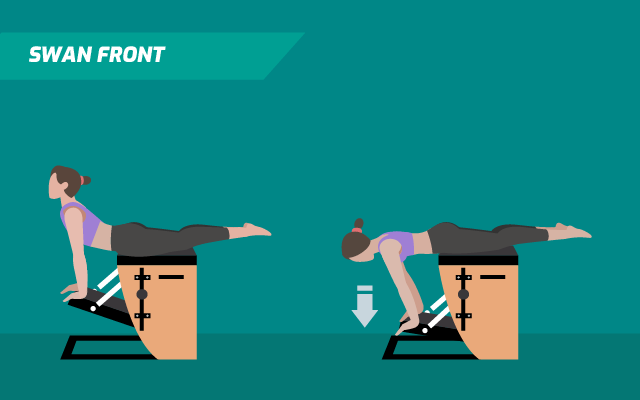
Designed to stretch the paravertebral muscles, this exercise consists of lying on the chair face down, with your belly resting on the padding and, with your body stretched, holding the pedals. When stretching the body, the steps must be pushed down with the arms straight, and then back to letting the springs pull them up.
The arms should be straight throughout the exercise and, while the pedals are raised, the torso should be slightly arched.
Reformer
The reformer was the first device to be developed for Pilates and is composed of handles, springs, bars and a cart that slides on a bed-like structure. It’s a great device, but it has plenty of exercise possibilities.
This device makes exercises more difficult, making them more intense and requiring more effort. It is recommended for more experienced practitioners.
Some of the exercises you can practice on it are as follows:

This exercise strengthens your thighs, glutes and abdomen. It consists of lying down on the cart, removing the springs from it, attaching the feet to the appropriate bar, and then bending the knees and hips, pulling towards the bar. After that, the starting position is returned.
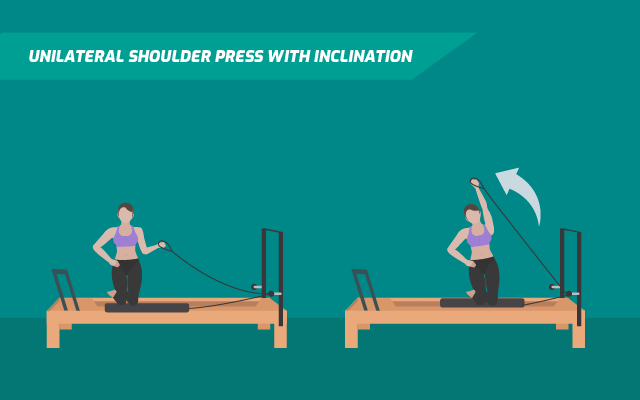
This exercise strengthens the trapezius, deltoid, oblique muscles, rectus abdominis, and triceps. You should be on your knees on the cart, facing sideways towards the bars. With one hand, hold one of the straps, which should be lifted above the head with a shoulder extension. This will cause the cart to drag closer to the bar.
After shoulder extension is completed, return to starting position.
Cadillac
The last equipment on our list is the Cadillac. It is also a great device. It consists of a padded table, bars, trapezoids, springs and handles. Several exercises can be done on it, including:

This exercise mobilizes the spine, in addition to strengthening the deltoid, biceps, dorsal and infraspinatus muscles.
To do this, you must hold the side rods, then lift your feet and place them over the trapeze bar. Then the spine and hip should be extended, and then return to the original position.
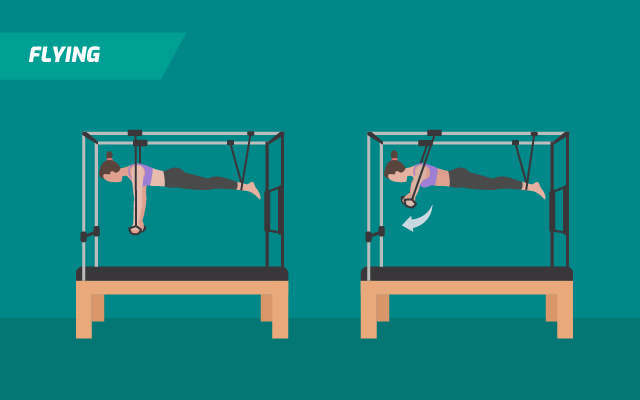
This exercise strengthens the rectus abdominis, biceps, triceps and rectus abdominis. You should stand with your feet on the safety strap, face down, and your hands should grip the suspended straps. Then, force is forced to close the arms in front of the body, lifting up, and then returning to the starting position.
Ground
The solo mode is the original one. Created before the braces, it is made with only the body’s own weight and may need, at most, a mat to soften the floor. Some of the exercises on the apparatus are adapted from the ground.
Among the exercises are:
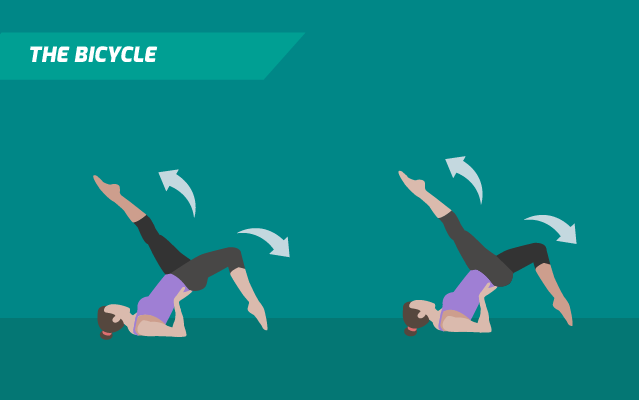
Supporting the elbows on the floor and with the hands on the lower back, belly up, the practitioner should lift the hips and leave them at 90º in relation to the floor. You must then make the movement of pedaling in the air, synchronized with breathing.

One of the simplest movements in Pilates, the practitioner is to sit on the floor, bringing the knees to the chest and lifting the feet off the floor. Thighs should be at a 90° angle to the floor and hands should rest on heels.
During inspiration, roll backwards until the shoulder blades are resting on the floor. Then exhale and return to the starting position.
Price
The price of pilates lessons varies widely from studio to studio, as well as how many weekly lessons you want to take.
In 2017, NAMU, an online course portal, conducted a survey in the city of São Paulo and came to the conclusion that, on average, R$339.35 per month is paid to have a weekly individual class in the city of São Paulo.
Three classes per week, in the west side of São Paulo (the most expensive region), cost an average of R$ 834.76, while in the north area, which is the cheapest region, it costs around R$ 754.70.
This price varies by region of the city, so it will clearly vary from city to city.
When classes are in groups (which is more complicated when using braces, but common in solo pilates) the price is lower, as an instructor can handle several students at the same time.
Pilates with appliances needs more investment in the studio to purchase equipment, also that’s why it’s more expensive than solo pilates.
It’s important to research the prices in your area and decide what type of pilates you want to do, as this influences the price.
Pilates and other practices
Pilates is related to several other practices. The method is able to improve several activities due to the benefits it brings.
Pilates and yoga
Yoga is an Indian technique that seeks balance and union between body and spirit. It is common to find questions about which practice is better, yoga or pilates, but it is important to know that the two can be allied.
The benefits brought by Pilates can help in yoga practice and vice versa. Balance, concentration, breathing can all be used in both practices to be able to access the benefits of both.
Pilates and bodybuilding
Combine Pilates and weight training is possible. Weight training seeks muscle growth, but the principles of yoga can help the practitioner to improve their health and muscle training.
It is important that instructors, both Pilates and weight training, are aware that the student practices both modalities so that there is no overload and that the necessary adaptations are made.
Pilates and sports
Pilates improves fitness, breathing, balance, concentration, precision of movement and muscle strength, among other things. All of this is extremely useful for any sport, whether it’s climbing, marathons or that game of beach volleyball on a family trip.
The practice of the Pilates method improves physical conditioning, which is why it is an advantage for health and for the practice of sports.
Pilates history
The creator of the Pilates method, Joseph Pilates, was born in Germany in 1883. He had asthma, rickets and rheumatic fever and, because of the influence of his parents – a gymnast and a naturalist – believed that with exercise and breathing he could solve his problems. health.
He began exercising outdoors and studying his own anatomy, creating an exercise and breathing routine.
He moved to England in 1912 and was a professional boxer, circus performer and coached Scotland Yard in self-defense. Two years later, World War I broke out and, along with other German citizens, Pilates was arrested by the British authorities.
The Pilates method took shape in prison. Joseph continued to perform these exercises in jail, and he encouraged fellow prisoners to exercise as well. He removed springs from the beds so that those who were too weak to get up could exercise with the springs attached to the foot and head of the bed.
The first Pilates equipment appeared at this time and years later, springs would be an important part of the creation of the cadillac and reformer.
After the war, Joseph returned to Germany, where he stayed until 1926. It was in this year that he moved to the United States and met his third and last wife, with whom he opened the first pilates studio in New York.
Due to the studio’s location, close to Broadway theaters, Pilates became known to dancers and actors, who sought strength and improved posture, as well as rehabilitation when injured.
From the 1960s onwards, the method became known outside New York as well, making the practice popular.
Joseph Pilates died at the age of 83 in 1967, and his students took the method further. That’s why today it’s one of the most popular types of health-related exercise.
Common questions
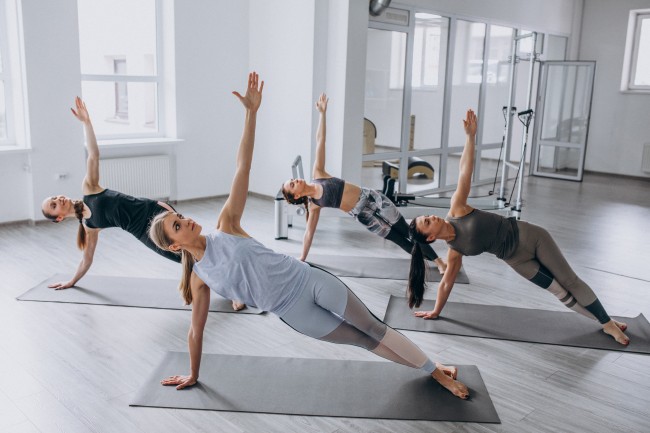
Who can practice pilates?
That’s the beauty. Practically everyone. The exception is if your doctor tells you not to do the exercises. It’s a good idea to ask your doctor if you are able to do the exercises.
It is important to remember, however, that some conditions require follow-up for practice. uncontrolled, hiatal hernia, hypertension and chondromalacia patella are conditions that require attention and adapted exercise.
Physically disabled people may also need to adapt in practice.
What to eat before and after practicing?
Light foods are recommended. Overfeeding before practice can be a problem because many exercises strain the abdominal muscles, and there are several that lift the stomach above the head. However, it’s not good to exercise on an empty stomach.
After practice the recommendation is the same. Since Pilates is not designed to expend a lot of energy, eating a lot after exercise is unnecessary.
How soon do I see the results?
With frequent practices — something around 3 per week — it is possible to see the results in 10 sessions. According to the creator of the method, in 10 sessions you see results, in 20 sessions others see, and in 30 sessions, your body will already be a different body.
Pilates is a healthy practice, a low-impact physical exercise that helps to bring balance to the body with several possibilities for everyone, but like all physical practice, it is important to be instructed by a professional.







